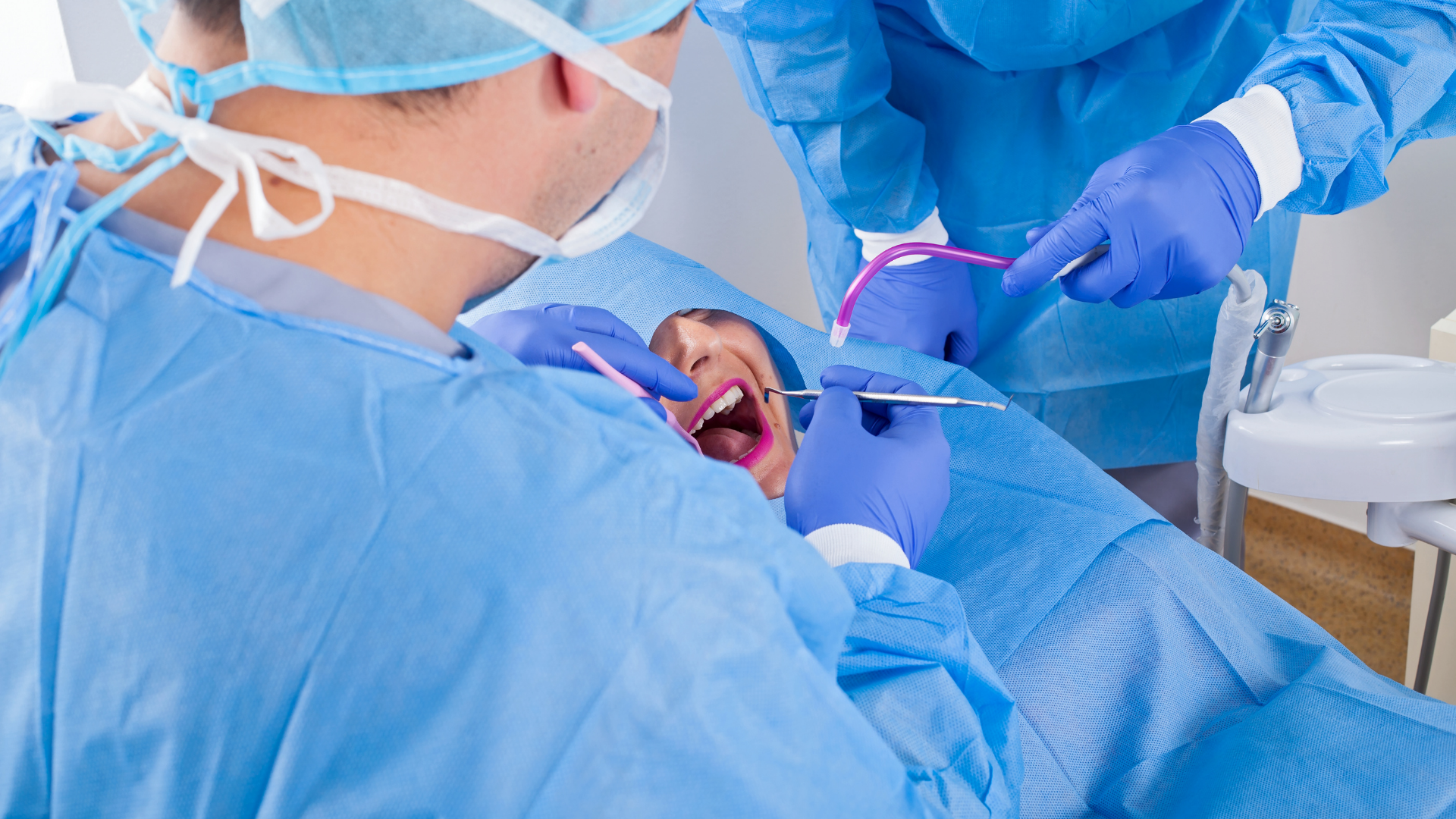ORTHOGNATIC SURGERY
We use the most modern treatment methods and technological tools to detect and treat every problem in your mouth and teeth.

Orthognathic surgery is called correction of the jaws in Latin. Since the natural-non-surgical treatments of the jaws can only be performed at the age of 6-12, orthognathic surgery is performed after the age of 18 in individuals who miss this age. In the treatment of orthognathic surgery, the orthodontist and the surgeon act together. It has 3 stages.
Implants are one of the best treatment methods in today’s dentistry, as they completely replace the existing teeth. Because when it is placed inside the existing jawbone, it completely combines with the bone and becomes a very durable structure. It creates a complete tooth structure with teeth in porcelain or zirconium structure placed on this durable structure. It offers a better solution in terms of function and aesthetics compared to the existing tooth, which is yellowed and worn, and the root surface is inflamed.
1. PHASE OF ORTHODONTIC TREATMENT
At this stage, the orthodontist makes all the teeth ideal, preventing the jaws from being idealized due to crooked teeth during surgery. After all the teeth are corrected, the orthodontist examines how much the jaws will be corrected on tomography using computer programs. By means of these programs, both the forward-backward-side-side-down-up-up amount of the jaws are determined, and accordingly, the orthognathic surgical guide splint is produced by 3D printers. Produced splints are used by the surgeon during surgery to ensure a correct surgery.
2. PHASE OF ORTHOGNATIC SURGERY
At this stage, the patient undergoes a surgical procedure that takes approximately 3 hours. After this procedure, which is performed under general anesthesia, the correction of the jaws is provided by the surgeon. The following should be considered after orthognathic surgery:
During the first 3 days, there is severe pain, difficulty in swallowing and difficulty in speaking, but all of these disappear after 1 week with the use of medication given by the surgeon.
The orthognathic surgical splint should be fitted with elastics so that the jaws are ideally fused. While the splint is installed without removing it in the first week, it is worn very little in the following periods. The decision of this is clarified when the orthodontist is visited 1 week later.
While feeding is only liquid and food in the first days, it continues as soft foods after 1 week and finally as many foods after 4 weeks.
3. AFTER ORTOGNATIC SURGERY
At this stage, there may be gaps or irregularities between the teeth after the jaws are corrected. The treatment is terminated after the non-contact or gaps are corrected between the teeth by using rubber bands or wire bending.
Quick Links
Links
- Kvkk
- Terms and Conditions
Copyright © LirikMedia 2023 All Right Reserved.

